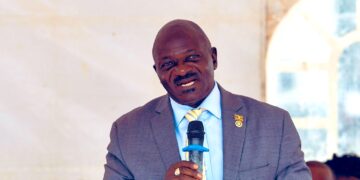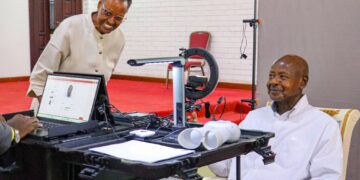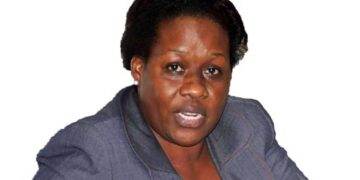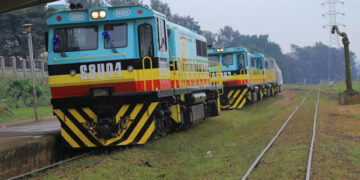The Ministry of Finance says the budget for the financial year 2022/2023 will mainly focus on social-economic transformation through addressing Covid-19 induced health and economic challenges, in order for the economy to recover back to pre-pandemic levels.
Presenting a statement to the Budget Committee on 27 April 2022, the Minister of State for Finance, Henry Musasizi said the government strategy is targeting lifting the 39 percent households stuck in the subsistence economy to a money economy while maintaining investments in security, infrastructure, and provision of reliable social services.
In the proposed 47.2 trillion budget for the Financial Year 2022/23 recently presented to parliament, the biggest chunk of the funds were allocated to Human Capital Development 8.43trillion (28%), 7.21trillion (23.9%) was allocated to Governance and Security, while Infrastructure was given 4.14trllion (13.7%). Agro-Industrialization comes in the 6th position with 1.19trllion (3.9%).
“Colleagues, the fiscal environment in which we prepared the budget did not enable us to accommodate all our needs. Consequently, we repurposed the budget to finance key priorities of government, ie. the Parish Development Model, enhancement of pay for scientists, operationalization of new administrative units, among others.” Musasizi said.
The minister stated that economic growth next year is projected at 6%, driven by: the Parish Development Model (PDM) and other government programs including Emyooga, the Small Business Recovery Fund, financing under UDB, UDC, among others.
He further submitted that the tax revenue-to-GDP ratio is currently at 13.2 percent, which is above the National Development Plan target of 12 percent, having dropped because of the pandemic.
Musasizi said Uganda’s total GDP is projected to expand to USD47.18BN (UGX173.96trillion) which is equivalent to USD137.3BN in Purchasing Power Parity (PPP) terms, which translates into a GDPper capita of USD1,049 if other factors remain constant.
The minister highlighted the inability to borrow over 53.9% of the GDP to Debt ratio as laid out in the Charter for fiscal responsibility, inability to impose new taxes due to the need for the economy to recover, reduced support from donors, and increasing commitments of interest payments and statutory obligations as the factors that shaped the proposed budget.
According to the MoFPED, the headline inflation stands at 3.7% and the core inflation -at the close of February stood at 3.1% and 3.6% at the close of March, with the key drivers being the rise in energy prices, fuel and utility prices.
However, the Chairperson of the Budget Committee, Patrick Isiagi, said that in the proposed Shs47 trillion national budget, Agriculture, which is the backbone of the economy, is being neglected.
“We are very perturbed to see you make a budget that leaves the Agriculture sector blind. You have slashed budgets of key Institutions like National Agricultural Research Organisation (NARO) and many others,” he stated.
Isiagi said that it is counterintuitive to have a proposed Shs76 billion cut from the Agriculture budget, yet the government is rooting for an agro-industrial sector.
In his personal observations and recommendations, Musasizi said government entities must improve efficiency if the budget is to meet it’s targets. He said the coordination of program activities to deliver common results is still weak and the Office of the Prime Minister needs to fully provide strategic oversight of program activities with regard to coordination, implementation and reporting.
“Mr Chairman, 50 out of 169 MDA’s assessed do not have approved strategic plans which should be the basis of planning and budgeting at institution level. Honorable colleagues, as a result of this performance, we have ordered a midterm review of the NDPIII to assess the impact of covid-19 and the lockdown interruptions arising thereof on the realization of national goals and results.” he added.

































